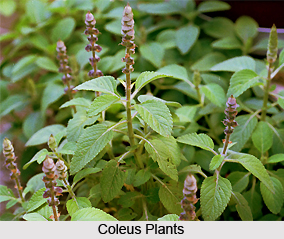 Common name: Makandi
Common name: Makandi
Botanical name: Coleus forskohlii
Parts used and where grown
This attractive, perennial member of the mint family originated in the lower elevations of India. It is now grown around the world as an ornamental plant. The root is used medicinally.
Historical or traditional use
As recorded in ancient Sanskrit texts, coleus was used in Ayurvedic medicine to treat heart and lung diseases, intestinal spasms, insomnia, and convulsions.
Active constituents
Forskolin, a chemical found in coleus, activates the enzyme adenylate cyclase. This enzyme is a turnkey compound that initiates a cascade of critical events within every cell of the body. Adenylate cyclase and the chemicals it activates comprise a "second messenger" system that is responsible for carrying out the complex and powerful effects of hormones in the body. Stimulation of the second messenger system by forskolin leads to blood vessel dilation, inhibition of allergic reactions, and an increase in thyroid hormone secretion. Forskolin has other properties as well, including inhibition of the pro-inflammatory substance known as platelet-activating factor (PAF) and inhibition of the spread of cancer cells. Forskolin may help dilate blood vessels and improve the forcefulness with which the heart pumps blood. A preliminary trial found that forskolin-reduced blood pressure and improved heart function in people with cardiomyopathy. It is unknown if oral coleus extracts would have the same effect. A small double-blind trial found that inhaled forskolin could decrease lung spasms in asthmatics. It is unclear if oral ingestion of coleus extracts will provide similar benefits.
Side Effects
Few adverse effects of coleus have been reported. It should be avoided in people with ulcers, because it may increase stomach acid levels. Direct application to the eyes may cause transitory tearing, burning, and itching.



















